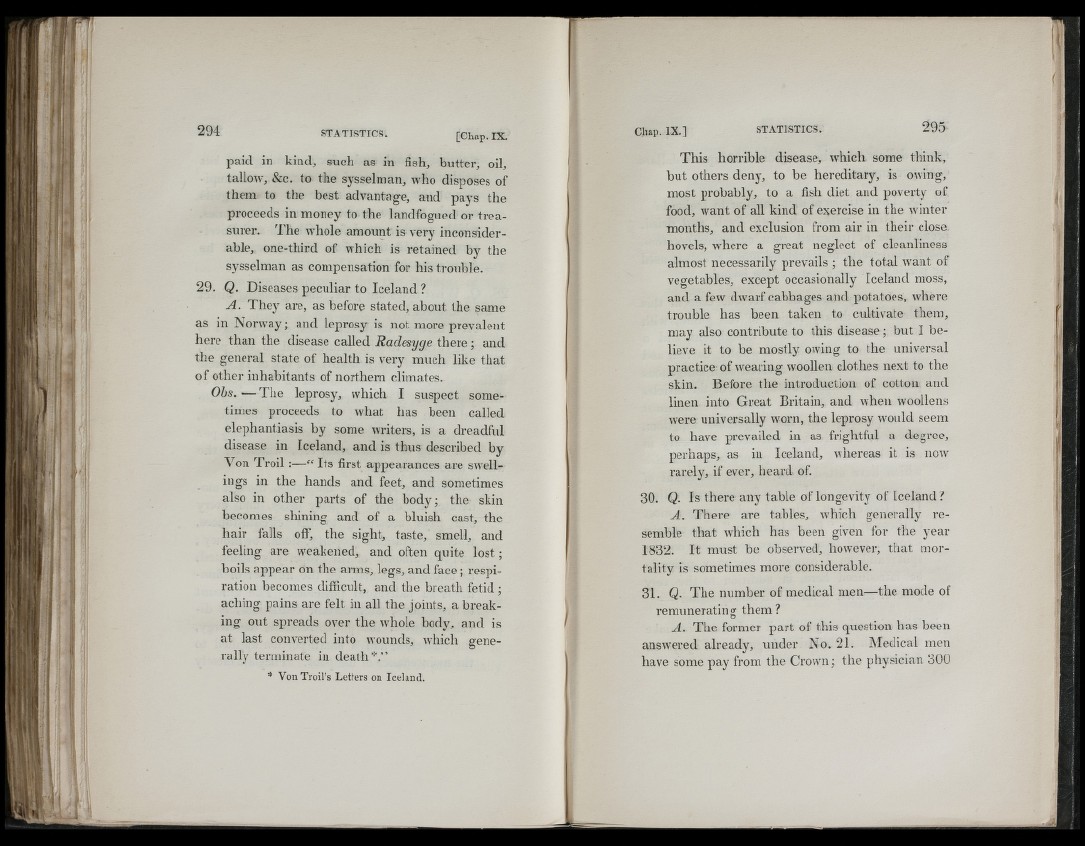
Hi
paid in kind, such as in fish, butter, oil,
tallow, &c. to the sysselman, who disposes of
them to the best advantage, and pays the
proceeds in money to the landfogued or treasurer.
The whole amount is very inconsiderable,
one-third of which is retained by the
sysselman as compensation for his trouble.
29. Q. Diseases peculiar to Iceland ?
A . They are, as before stated, about the same
as in Norway; and leprosy is not more prevalent
here than the disease called Radesyge there ; and
the general state of health is very much like that
of other inhabitants of northern climates.
Ohs. — The leprosy, which I suspect sometimes
proceeds to what has been called
elephantiasis by some writers, is a dreadful
disease in Iceland, and is thus described by
Von Troil :—“ Its first appearances are swellings
in the hands and feet, and sometimes
also in other parts of the body; the skin
becomes shining and of a bluish cast, the
hair falls off, the sight, taste, smell, and
feeling are weakened, and often quite lo st;
boils appear on the arms, legs, and face ; respiration
becomes dinicult, and the breath fetid ;
aching pains are felt in all the joints, a breaking
out spreads over the ivhole body, and is
at last converted into wounds, which generally
terminate in death*.”
* Von Troil’s Letters on Iceland.
This horrible disease, tvhich some think,
but others deny, to be hereditary, is owing,
most probably, to a fish diet and poverty of
food, want of all kind of exercise in the winter
months, and exclusion from air in their close
hovels, where a great neglect of cleanliness
almost necessarily prevails ; the total want of
vegetables, except occasionally Iceland moss,
and a few dwarf cabbages and potatoes, where
trouble has been taken to cultivate them,
may also contribute to this disease; but I believe
it to be mostly owing to the universal
practice of wearing woollen clothes next to the
skin. Before the introduction of cotton and
linen into Great Britain, and when woollens
were universally worn, the leprosy would seem
to have prevailed in as frightful a degree,
perhaps, as in Iceland, whereas it is iioiv
rarely, if ever, heard of.
30. Q. Is there any table of longevity of Iceland ?
A . There are tables, which generally resemble
th a t which has been given for the year
1832. It must he observed, however, that mortality
is sometimes more considerable.
31. Q. The number of medical men—the mode of
remunerating them?
A. The former part of this question has been
answered already, under No. 21. Aledical men
have some pay from the Crown; the physician 300